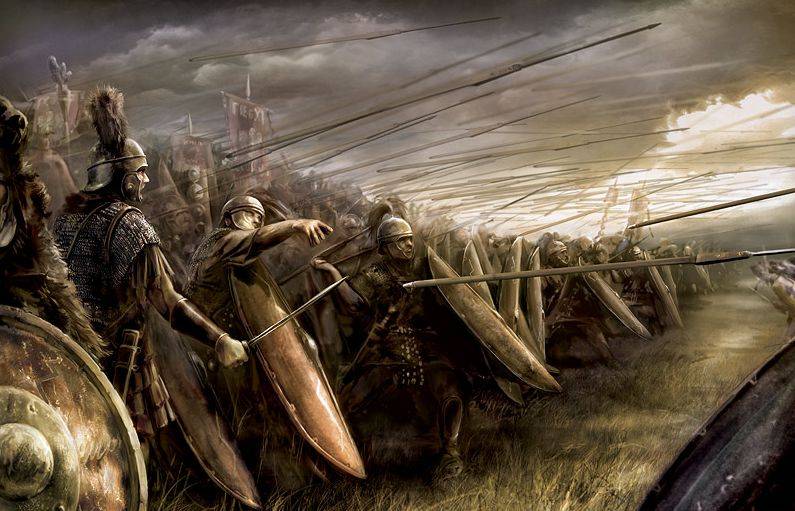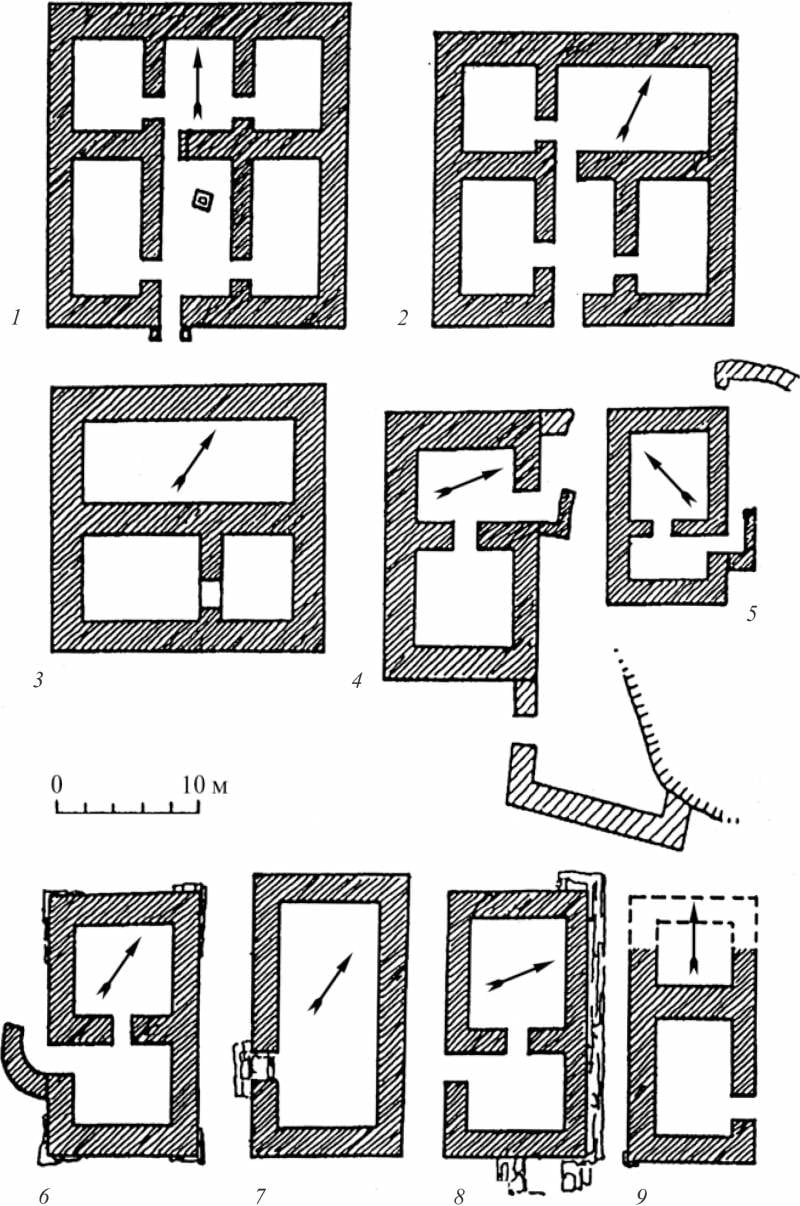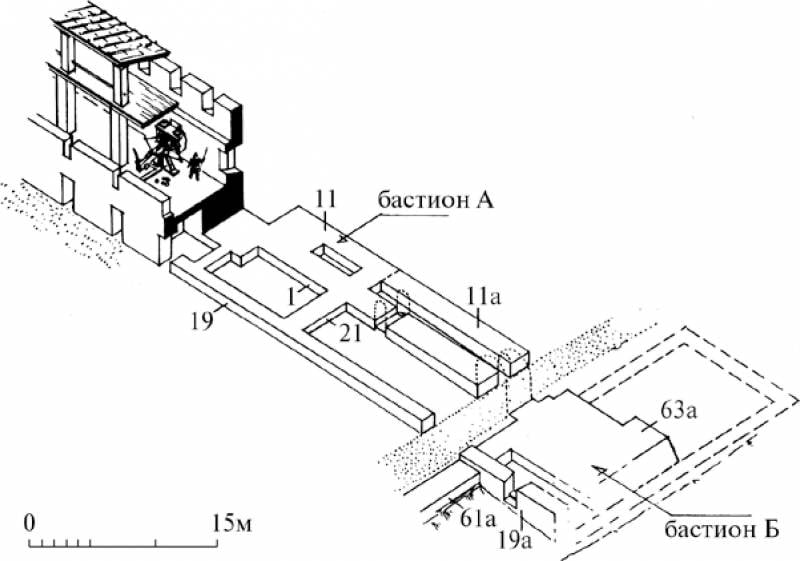Bosporan Kingdom. Fall of Mithridates VI Eupator

Source: https://www.roman-glory.com
Skillfully using the image of the defender of Hellenic culture and tradition, maneuvering on the waves of political currents and closely following the crises in the regions, the Pontic king Mithridates VI Eupator absorbed the states of the Black Sea region one after another. Having reached the Bosporus lands and having included them in the structure of his state, he turned his gaze to the west. There, washed by the waters of warm seas, the Roman Empire was confidently building up its strength. Not yet omnipotent, but already very powerful, and Mithridates had personal scores for her.
Two great states were destined to meet on the battlefields. A long and prolonged struggle eventually resulted in three military campaigns filled with campaigns, bloody battles, betrayal and heroism of their participants. As shown story, the advantage was still not on the side of Mithridates. But, despite the bitter defeats, the Pontic king again and again rose to battle, relying each time on the huge resources of the Bosporus kingdom and the lands of the Northern Black Sea region, the role of which in these confrontations can hardly be overestimated.
Power of Mithridates on the Bosporus
As mentioned in the previous article, retaining the conquered lands of the Northern Black Sea region was almost more difficult than capturing them. The first thing Mithridates started with was to free the Greek cities from paying tribute for a time, lowered taxes, granted freedom to some groups of the slave population and provided benefits for the rise of craft and agricultural activities.
Greek cities, although they were part of Pontus, still had some autonomy. So, Panticapaeum, Phanagoria, Gorgippia, as well as Chersonesos and Olbia could even mint their own coins. It is worth noting that the coins, although they were their own, were mainly depicted on them Mithridates VI Eupator.
In parallel with the economic strengthening, the tsar was building up the defenses of the lands. Moreover, they defended themselves mainly not from the main rival of Pontus - Rome, but from the local barbarian tribes who threatened the Hellenic lands with constant raids and plunder. The tribal world of the Northern Black Sea region at this time was distinguished by great mobility and could greatly shake the position of Mithridates in the region. On the Asian part of the Bosporus (Taman Peninsula), old fortifications were hastily reconstructed and new ones were erected. These buildings, with an area of about 200 m2 and the thickness of the walls about 1,7 m, clearly make it clear about the desire of Mithridates to protect himself from the invasion of the North Caucasian tribes who lived nearby. The so-called Hellenistic "tower houses" have also become widespread. On the Bosporus, they were erected earlier, but under the Pontic rule, their number increased markedly.

Plans of "house-towers" of the Cimmerian Bosporus (after Ya. M. Paromov). 1 - at the Seven-Brothers Fortress; 2 - near the village "For the Motherland"; 3 - Jubilee I; 4 - near the village of Anapskaya; 5 - Dzhemete I; 6 - Tsemdolinskoe; 7 - Vladimirovka; 8 - near the Rassvet farm; 9 - on the bank of the Akhtanizovsky estuary. Source: http://www.krimoved-library.ru
The Crimean peninsula was strengthened less significantly. This was partly due to the calmer situation in the European part of the Bosporus, partly due to the fact that an impressive system of fortifications existed here from the beginning.
Protection from pirate and barbarian raids, economic incentives and tax breaks had a significant effect on the Hellenic cities. Later, after the end of the grace period, the Bosporus lands were able to pay tribute to the Pontic king in the amount of 180 thousand medims of bread and 200 talents of silver.
It is important to note that this tax, apparently, was significant, but still not too burdensome. He did not interfere with the growth and development of Greek cities during the recovery period after the crisis associated with the transfer of power.
Talent - a measure of weight, common at one time in the Middle East and the Mediterranean. It was also used as a monetary (non-monetary) unit in Ancient Greece. Approximate weight 30 kilograms.
As mentioned earlier, Mithridates fought with Rome three times. And after the First War, unsuccessful for the Pontic king, the course of hostilities led to an attempt to separate part of the Bosporus lands from the Pontic kingdom. Probably, a certain role in these events was played by the actions of the barbarian elite of power, which still could not come to terms with the loss of their positions in the politics of the Bosporus lands and tried in every possible way to restore them.
To suppress the uprising and restore power in a key direction for himself, Mithridates VI Eupator gathered an impressive fleet and a huge army. The scope of the preparations was so great that the Romans even began to suspect that all these forces were being assembled not for a campaign on the Northern Black Sea region, but against Rome. This circumstance, by the way, was the reason for the start of the Second Mithridates War. The punitive operation had to be postponed, and it resumed after the hostilities.
Very little is known about the fighting of the punitive corps. The ancient Roman historian Appian reports only that at that time a campaign was undertaken against the Achaeans in the Asian direction. Due to the heavy losses of the expeditionary corps and unfavorable weather, Mithridates was even forced to retreat, regroup and regain power in the second campaign.
There is also information that in parallel to the Achaean tribes Mithridates in the European part of the Bosporus was opposed by another force. Whether these were Scythian associations or Sarmatian associations is not known for certain. Scientists differ on this issue. However, given that the events took place in the Crimean part of the Bosporus, it is very likely that the initiators of the confrontation were still the Scythians.
Be that as it may, Mithridates VI Eupator managed to restore his position in the northern lands. Having united them under the rule of the capital of the Bosporus kingdom - Panticapaeum, he appointed his son Mahar the ruler of the region, thereby finally throwing off the image of the defender of the Hellenes and their freedoms. The fight against Rome was now the only goal of the Pontic king, and as history has shown, he followed it to the very end.
The decline of the era of the great king of Pontus
The third war unleashed by Mithridates and a crushing defeat in their own lands dealt a heavy blow to the state of the state and the loyalty of the people close to the king. Realizing all the lamentability and futility of attempts to resist Rome, Mahar, being the governor of Pontus in the lands of the Northern Black Sea region, decided on treason. He sent a golden wreath for the Roman commander Lucullus, and the army supplies of food, thereby concluding a friendship with them.
Mahar's betrayal dealt a heavy blow to Mithridates. However, despite the seemingly hopeless situation, the Pontic king did not even think to surrender. Even completely defeated in Asia Minor, he did not give up the fight. Moreover, he had a new plan for the transfer of hostilities to the territory of Rome and the organization of an invasion from the east through the northern lands of Europe.
The first stage in the implementation of the plan was the return of power over the Bosporus, where the son who betrayed him still ruled. The way to the Northern Black Sea region lay through the Caucasus, inhabited by many warlike tribes. Having made a risky transition, in which some of the barbarians who lived in those lands were subdued by force, and some entered into friendly alliances with the passing army, the Pontic king went to the Kuban region. Local tribes received him very cordially, let him into their territory and exchanged all kinds of gifts. For additional support, the king even married some of his daughters to the most powerful leaders of the local tribes.
By this time, according to the testimony of the Roman historian Appian, Mithridates had a final plan for the invasion of Rome from the east through the Alps.
It is interesting to note that the Roman commander Pompey, who defeated the king in the Third Mithridates War, did not dare to pursue him through the Caucasus, because he considered that many dangerous tribes lived in those lands, with which the Roman troops should not enter into conflicts. Instead, he gave the order to start a naval blockade of the Cimmerian Bosporus.
Makhar, who learned that his father had come such a long way in such a short time, and did not expect it at all, was unable to offer any resistance. They even made an attempt to apologize to the king, but this action did not bring any results. In the end, Makhar was forced to flee to Chersonesos, where, finding himself in an absolutely hopeless situation, he decided to commit suicide. The loss of his son, on whom great hopes were pinned, dealt another blow to Mithridates VI Yevpator, but did not stop him on the way to implementing the plan.
Nevertheless, the position of the Pontic ruler became almost hopeless. The dense naval blockade of the Bosporus and the loss of almost the entire state forced him to enter into negotiations with Pompey. The requirements of the Roman commander were simple: complete surrender, as well as his personal appearance in Rome. Mithridates could not take such steps, but in order to soften the situation and gain time, he promised to send one of his sons to Pompey.
Despite the hardest conditions, the Pontic king still hatched plans for a new war. Hastily gathering an army and preparing weapon, Mithridates tried to collect everything necessary for the campaign in the shortest possible time. The population of the Bosporus was en masse taxed, new settlements were hastily erected on agricultural land, soldiers were recruited from both free and slaves. Parallel to this, the defensive systems of Panticapaeum were also improved.

Acropolis of Panticapaeum. Curtain designed for the installation of catapults. Source: http://www.krimoved-library.ru
All these extraordinary measures, aggravated by the abuse of the tsarist administration, coupled with the Roman blockade, caused great discontent among the inhabitants of the Hellenic cities. The resulting explosive situation eventually turned into an uprising. The first city in which a coup broke out was Phanagoria. The rebels laid firewood on the part of the city where the daughters of Mithridates were, and set it on fire. Almost all of the royal children surrendered, with the exception of Princess Cleopatra, who resisted, and her father was able to save her on a specially sent ship.
After the riot in Phanagoria, Chersonesos, Theodosia, Nympheus and all other cities along the coast of Pontus (Black Sea) broke away from Mithridates. In such a situation, the king turned to the Scythians with a request to come to him with an army as soon as possible. The daughters of Mithridates were sent to the Scythian rulers, but the detachment accompanying the girls rebelled and went over to the side of Pompey.
Having finally lost the kingdom and no longer counting on Scythian support, Mithridates VI Eupator still hoped to continue the struggle with Rome. Relying on a long-standing friendship with the Celts, he stubbornly prepared for the campaign. But by that time even the tsarist army began to hesitate, with apprehension and excitement regarding the upcoming long-distance expedition.
In the end, in a series of betrayals and failures, Mithridates was betrayed by his son Pharnaces, on whom he had high hopes and hoped to make him his successor. History decreed that the king's son stood at the head of the conspiracy, which, however, was revealed. This did not save the former lord of Pontus, but only hastened his inevitable end. Pharnaces first came to the camp of the Roman defectors and persuaded them to march against his father. After that, the prince sent out his envoys to the nearest camp sites and agreed with them on joint actions. On the morning of the next day, in accordance with the agreement, the defectors were the first to throw a war cry, which was supported by many wars of the army of Mithridates, as well as the fleet.
Unable to come to an agreement with his son, Mithridates nevertheless realized the failure of his hopes and, fearing that the traitors would betray him to the Romans, decided to commit suicide. The great Pontic ruler decided to take the poison that he always carried with him in the hilt of his sword. However, this time fate played a cruel joke on him. He and his two daughters drank the poison, wishing to share the fate with their father. Both girls died immediately, but the potion did not work on the king himself. The fact is that Mithridates had a habit of constantly using poisons in small doses in order to protect himself from poisoning. The adapted organism did not want to die.
This truly great tragedy ended with Mithridates VI Eupator being stabbed with a sword. Who exactly delivered the decisive blow is not known for certain, but this is not so important. At the end of his life, through his own fault, the great king was deprived of the right to an easy death.
Results
Trying to analyze the actions of Mithridates VI Eupator through the prism of the Bosporus kingdom, the conclusion involuntarily suggests itself that the great king placed too much hopes on the tribes from which he was going to form troops. Guided by thoughts about the invincibility of the Scythian tribes, as well as the power of numerous barbarians of the Great Steppe, fueling it with his own propaganda, it seems that he himself believed in the invincibility of the armies that he had repeatedly collected.
It seems obvious that the Pontic king was unable to create a reliable base in the lands of the Northern Black Sea region for a clash with such a powerful enemy as Rome. The fragile Greco-barbarian union under the auspices of Pontus lasted until the first major defeats of Mithridates, breaking up into several pieces, thereby further exacerbating the contradictions between the Hellenes and the barbarians. Of course, for some time Mithridates managed to smooth them out and level them, but by no means eradicate them. Victories over the Scythian and Sarmatian tribes did not mean superiority over Rome at all.
One thing was clear: by his actions, the Pontic king tore the lands of the Northern Black Sea region from a certain autonomy and originality, throwing them into the orbit of the influence of the Roman state. Having taken over the baton of government, the Romans coped with this task much better than Mithridates, for many years determining the development and political vector of the Bosporus kingdom.
Sources:
1. VF Gaidukevich "Bosporus Kingdom" Moscow. Leningrad. 1949
2. Yu. A. Vinogradov, V. A. Goroncharovsky "Military history of the Bosporus kingdom" Publishing house "Lomonosov". 2017
3. VM Zubar, AS Rusyaeva "On the shores of the Cimmerian Bosporus" Publishing house "Stilos". 2004
Information